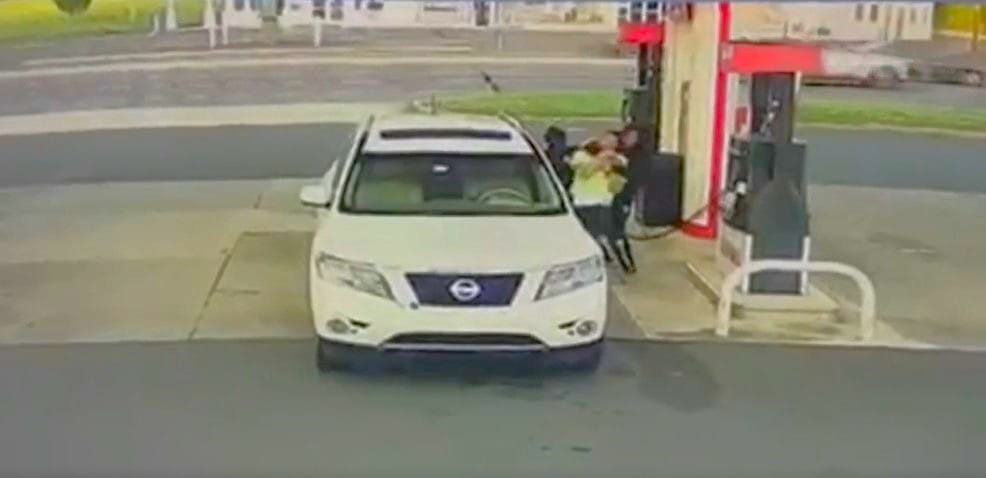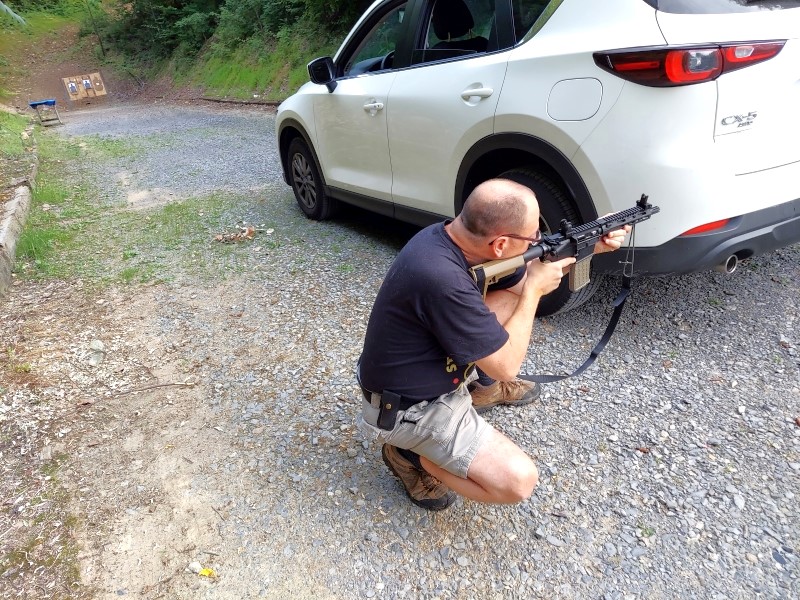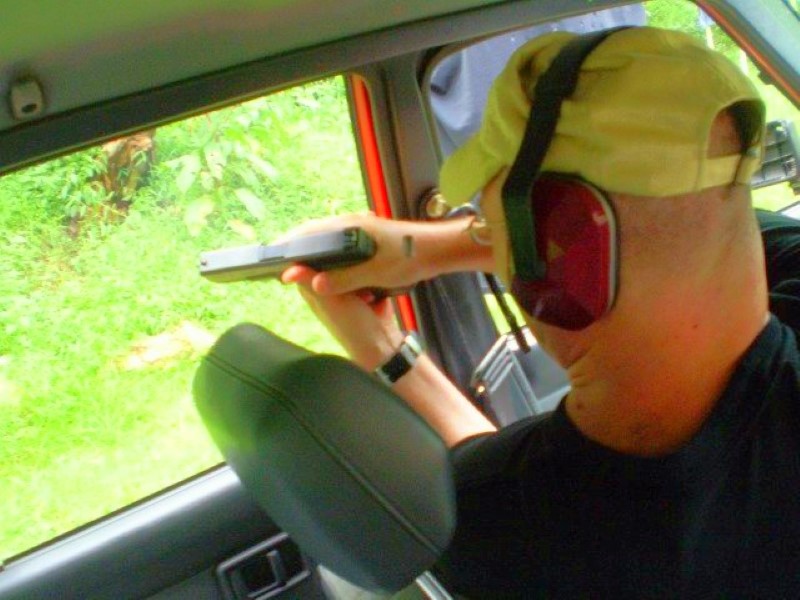The average American drives 14,263 miles per year. That’s just the average—many of us drive quite a bit more than that! Suffice to say, we spend a lot of time in our vehicles. Because of this, we are likely to encounter various problems, a carjacking, for instance, while driving. In this article, we’ll take a look at how to minimize our risks and how to react to risks should they prevent themselves.
Startling Carjacking Statistics
Violent carjacking incidents have risen sharply in the past couple of years. In 2021, New York City reported more than 500 carjackings, a number that quadrupled over recent years. Philadelphia also reported a quadrupled number in that year, for a total of more than 800 carjackings. Chicago, in 2021, reported over 1,800 carjacking indidents, the most of any American city. Aside from these numbers, cities are also reporting record homicide rates over the past few years.


There are approximately 34,000 carjackings annually in the US. In 56% of these, multiple carjackers are involved in each incident. 74% of carjackers are armed (54% are armed with a firearm). 93% of carjackers are male. In three percent of carjacking incidents, both a male and a female are the carjackers. 56% of the time, there are multiple carjackers involved.
90% of the time, there is one victim involved in the carjacking. So when riding alone, your chances of being chosen as a victim are far higher. 68% of the time, the carjackings took place between 6:00 PM and 6:00 AM. 93% of the time it takes place in cities/suburbs.
Chances are that you’ve heard of such a violent incident occurring close to where you live. Many carjacking incidents occur near public transportation, stores, and restaurants. These days, it seems that none of us are immune, especially if we travel in urban areas.
Strategies
All of the above sounds pretty dismal, but there are some things we can do to minimize our risks. These are tactics for Mr. and Mrs. Everyday American to employ, rather than for tactical teams. Some of these tactics are definitely employed by tactical teams, but I want to address the needs of regular people going about the scenes of their daily lives.
Prevention
As always, in every block of instruction on tactics that I teach, I preach Situational Awareness. Being aware of your surroundings is still the most important thing that you can do in your daily travels. Often, we can spot trouble before it arrives and avoid it. Sure, it sounds great to say, “If anyone tries to carjack me, I’ll just shoot ’em!”
Consider what happens during an incident in which you have to shoot an attacker (assuming he/they don’t shoot you first):
- The police may realize you’re the victim and release you after your statement. On the other hand, you might be taken into custody. That means possibly spending time in jail. I’ve worked in a jail, it’s not pleasant
- You’ll need a lawyer. They do not work cheaply.
- You could be indicted and have to go to trial. That means more money, and you might be held in the county jail pending the disposition of your trial (which could take well over a year), even though you know you’re innocent.
- Assuming you get out of all of that, the attacker(s) and family will turn around and sue you. Yep, you guessed it…more lawyers and money.

Wouldn’t it be a lot easier, cheaper, and less dramatic if you remain alert and possibly avoid all of that?
Approaching Your Vehicle
When approaching your vehicle, walk with a purpose. Keep your head up and scan for threats. If a person, or several, are standing around your vehicle, try to read their intentions. If something doesn’t seem right, it probably isn’t. In such an instance, it’s better to just walk on past. Unless it’s a life-or-death trip, there’s nothing that says you have to get in your car. You can always go into the establishment you’re at (perhaps it’s the grocery store) and ask store associates or security personnel to accompany you out to your vehicle and see you safely off. Or call the police. The thing is, with guys (who possibly are armed), our ego usually won’t allow us to do that. We tend to push the envelope.
In fact, during Vehicle Tactics training, I faced precisely this scenario. There were a couple of miscreants hanging around the vehicle and one way off to the side waiting. The concept of me not having to get into my car never even crossed my mind! For some reason, my mind told me that the only possible outcome was me having to get into my car.
Guess what? A guy was waiting in ambush, and we were using Airsoft training pistols. In the end, we were both wearing several welts from the pellets that hit our skin. It felt like bee stings and the pain reminded me that I was thinking like a moron. Point taken. If it doesn’t look safe, pass on by and observe from a distance. Eventually, the bad guys will move on. Or you can call the police. Either way, the confrontation is 100% avoidable.
Other Strategies to Avoid a Carjacking
- Have your keys out and ready. One nice thing about many of today’s vehicles is keyless entry. It saves time and fumbling for keys, which is both convenient and safer.
- Park in well-lit areas, close to entrances, if possible.
- Park in attended garages.
- Place valuables into the trunk so they’re not advertised to bad guys.
- Don’t park near woods, large trucks, or vans (especially vans with “Free Candy” or “Free Puppies/Kittens” spray-painted on the side panel).

With all that said, these are just ways to possibly minimize your chances of being attacked in a carjacking. These days, we see videos all the time of people on camera, in well-lit, populated areas being victimized. Nothing is a sure-fire solution, but we should at least try to minimize our risk.
Once You’re In Your Vehicle
Lock the doors immediately. There’s nothing like having an armed lunatic hop into the seat next to you unexpectedly. Also, put your windows up. This limits access to you and the vehicle by people outside.
LEAVE! Don’t sit there and Task Fixate. Do not balance your checkbook. Do not sit there and look at your phone, answer emails and texts (but let’s be honest, we all do that). Again, alertness is the key to not being a victim here. Bad guys know that one of the first things we do when we get in our car is to start it up and then look at our phone.
While Driving
Keep a safe interval between vehicles. While stopped in traffic, maintain at least 1/2 a car length at stops. This is huge! I often catch myself stopping a little too close to the vehicle in front of me and constantly have to remind myself to maintain at least half a car length between my vehicle and the one in front of me. That gap will allow you to get out of danger should it prevent itself.

Going along with the above suggestion, be aware of egress (escape routes). Keep an eye out for avenues where you can drive away if the situation turns bad—sidewalks, other lanes, etc. Anything that will allow you to get out of Dodge should the situation turn ugly.
It’s a good idea to play “What If” scenarios. What if the driver of that vehicle in front of me gets out and starts shooting? What will I do? Where might I go? Does that sound paranoid? Maybe, but it keeps our minds alert and thinking. Remember, pre-planning is crucial to prevention and our response.
Play the “Bodyguard Game,” too. Act like you’re a bodyguard and avoid confrontations, both inside and outside your vehicle. It will help keep you in the mindset of avoidance. In fact, if you’re with your family, you actually are a bodyguard.
Refueling
Scan the area on approach. If it doesn’t look safe, move on to another gas station.
As with driving in traffic, leave enough room for an emergency escape when you park. Don’t park your vehicle in confined spaces, immobilizing it. This can be especially difficult in refueling areas.
Maintain alertness while pumping gas. Your time of most vulnerability will be when using your card and entering information into the pump terminal if you’re using a card. Bad guys know that you’ll have to enter information and that you will be focused on that.
Don’t be afraid to ask establishment attendants for assistance.
If Attacked
In the event you are safely able to, simply drive away from the attacker. Maybe he’s simply trying to force your door open and he’s not using or displaying any weapons against you. You’re sitting in a huge, heavy weapon, so use it!
If you can, get out of the vehicle if you are not able to drive away. It’s not worth getting into a firefight over a vehicle. You’ve (probably) got insurance. And even if you don’t, the court costs will far outweigh the cost of your vehicle (at least, the type of vehicle that I drive).
If the threat is to the front, and you’re with passengers, yell, “Contact Front!” to alert them to the danger. Wherever the contact is, tell other people: “Contact Right!” etc.
A good procedure for removing your seat belt is to place both hands high in your upper left chest, over the seat belt (assuming you’re in the driver’s seat). from there, follow the belt down to the release point. This is more reliable than trying to blindly find the release. Once you activate the release, guide the belt out and away from you so that, if you happen to be wearing duty gear, the seat belt does not snag on it. You might be shocked to find the number of people who forget to remove their seat belt under stress and attempt to exit the vehicle with the belt still on. The seat belt comes off before we draw our weapon if we are exiting the vehicle.




Once the belt is away, open your door. I like to use my shoulder and elbow to initiate opening the door once I’ve activated the latch. If you force it open and shove it with your foot, the door is prone to spring back from slamming open, and that rebound action does nothing except to fight you in your efforts to get out.

This might be a time when you evaluate your method of carrying a handgun if you do carry. Are you able to access your handgun while you are seated in your vehicle? Maybe the threat did make it into your vehicle, in which case you may need to deploy your weapon on the inside. I’ve found that Appendix Inside The Waistband carry works well for being able to draw a weapon while seated in a vehicle.
When the door is open, get out of the vehicle if you are unable to get away. If the threat is engaging you with firearms, then it’s definitely time to lay down some fire. Don’t spray and pray, but use aimed fire. And remember, you’re likely not carrying a ton of weapons and spare ammo if you’re in your everyday travels, so you probably can’t expend several magazines worth of ammunition.

Vehicles are bullet magnets. You do NOT want to be trapped inside your immobilized vehicle while armed threats are bearing down on you!!

If the threat is to the front, move to the rear and get your passenger(s) to safety with you. Keep the vehicle between you and the threat(s). Use it as cover.
Stay back from the vehicle, resist the urge to hug it, and use it as a rest for your weapons. We see that in the movies all the time; good guys shooting over top of the hood, roof, or trunk while resting their weapons on it. Very bad move. Rounds from the vehicle can skip off the skin and hit you. What’s more, you make a perfect target, perched atop the vehicle like that, as if you’re a shooting gallery target.


Stay low! Shoot around the vehicle, not over the top. Stay back a couple of feet—doing so preserves your mobility. If you’re stuck up against the car, you have less mobility.


Communicate with your partners! Let them know what you’re doing. If you need to reload, let them know. If you want them to reload, advise them you’ll cover them while they do. Don’t both reload at the same time unless your weapons are empty. While one reloads, the other covers (tactical reloading). When your weapon is reloaded and ready, announce, “I’m up!” Communication is key!

Cover each other while you get to a better position and while alerting the authorities that you’re being attacked. Try to avoid all moving at once, it’s better to leap frog away from the hostile contact.


The enclosed nature of a vehicle makes firing a weapon inside an interesting (and loud) experience.

Cover
Not all cars are built equally. Some can withstand bullets, others get perforated like Swiss cheese. In our Vehicle Tactics Class, we shot up an early model Nissan Sentra. The amount of abuse that those car doors took was nothing short of astounding! The doors were stopping 12-gauge slugs, .308, .223, and 7.62×39 rounds! We did get some of the heavier rounds to go through then, but the amount of bullets that those doors stopped left us all with our jaws on the ground.

On the flip side, don’t assume every car will stop incoming rounds. The engine block and the wheels are generally the safest places to be behind. They’re normally pretty solid and as likely to stop bullets as anything on a car.
In Conclusion
Because we spend a great deal of time in our vehicles, it makes vehicular crimes a factor to watch out for. Situational Awareness can drastically reduce our chances of becoming a victim. Running through some drills ahead of time can drastically increase your chances of survival should trouble come knocking.
Remember to stay fluid and remain flexible, and communicate with your passengers.
Allow me to leave you with a caveat: If you plan on training live fire with vehicles, utmost caution must be the order of the day. In fact, I don’t advocate this unless you are training with professionals. If you’re not working with people who do this for a living, I recommend dry fire training.
Many people become engrossed in the tactical situation and forget a very important thing: Sight Offset. Your sights might be on target while the actual muzzle of your blaster is pointed at the vehicle. Ergo, you launch a round into your beloved vehicle.
Seriously, though, it is very easy to get hurt (or worse) doing these tactical exercises. They are complex, and you never can be certain what the person(s) whom you’re working with is going to do. He or she might zig when they should have zagged. Possibly right into your fire. Do not wound or kill your fellow partners.



Pingback: Vehicle Tactics in a Carjacking — How To Play It Safe – Guns and Pride()
Pingback: Weekend Knowledge Dump- August 12, 2022 | Active Response Training()